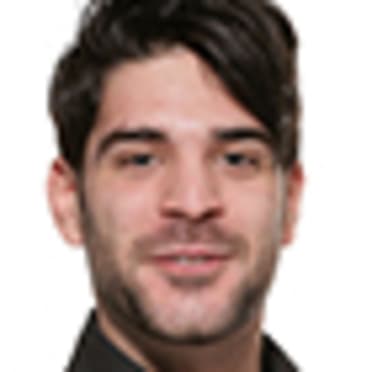Orioles enter 2019 with an eye on the future
Rookie skipper Hyde set to guide club in rebuilding stage
SARASOTA, Fla. -- These are transitional times in Baltimore. Eight months after a midsummer trade spree led to an offseason overhaul, the Orioles are embarking on a new chapter flush with fresh faces.
Gone are former executive vice president of baseball operations Dan Duquette and manager Buck Showalter. Manny Machado is on the Padres and Adam Jones is in the desert. Others from the postseason teams of 2014 and '16 are scattered elsewhere.
In their place is the rookie GM-manager tandem of Mike Elias and Brandon Hyde, who have vowed to rebuild from the ground up in Baltimore. Both have been part of such a process before, Elias with the Astros and Hyde with the Cubs. They both had a hand in molding youngsters who grew into World Series champions; Hyde with the 2016 Chicago team and Elias drafting a group of players who would go on to win it all in '17 (by which point he was employed by the Brewers).
The challenge awaiting them in Baltimore is arguably greater, and at least as large. Elias and Hyde inherit a deeply inexperienced roster, a farm system lacking depth and with the behemoths of the AL East awaiting. It will be some time before they can compete with the division again. Every move of 2019 will be made with an eye toward the long-term goal of doing so on a consistent basis somewhere down the line.
What's the goal?
To increase the base talent level throughout the organization, which the Orioles will look to do in a variety of ways. From beefing up their analytics department to increasing their scouting foothold in Latin America to pouring considerable focus into the Draft, it’s the behind-the-scenes initiatives that will take precedent, all with an eye toward future sustainability. In baseball terms, that is long-term planning of the highest order.
But they still have to play the games. This season should go at least a ways toward determining which inherited players factor into the new front office’s plans. And, conversely, which don’t. Expect turnover to continue.
What's the plan?
In a perfect world, the Orioles will see enough improvement from youngsters like Richie Martin, Drew Jackson and Cedric Mullins to turn them from question marks into regulars, develop the top prospects already in the system (Yusniel Diaz, Ryan Mountcastle, Austin Hays) and supplement that system with midseason trades for their few veteran holdovers. The Orioles also need to make sure they hit in this year's Draft, where they have the No. 1 pick. Elias recently called that pick “the most important decision the organization will make this year.”
Development is the theme, not only for the players but also for Hyde, who stocked his coaching staff with former Minor League instructors. Maybe more than any other club, the Orioles view their Triple-A roster as an extension of the big league club. They have no shortage of optionable pieces; more than half of the 40-man roster can be shuffled back and forth from Norfolk, and many will.
The message players will hear on both ends will be uniform: Be flexible. The Orioles preached versatility above all else this spring, moving players around the diamond at a dizzying pace. They’re hesitant to assign roles to nearly anyone on the pitching side, where the Orioles will need to get creative in order to plug holes behind probable Opening Day starter Andrew Cashner, Dylan Bundy and Alex Cobb (who will likely start the season on the injured list), their three veterans in the rotation. Openers, swingmen, piggybacking and everything in between -- it’s all on the table.
What could go wrong?
Martin and Jackson, both Rule 5 Draft picks who have never played past the Double-A level, could prove unready. Diaz and Mountcastle could take steps back in their development. Hyde’s positive message could wear thin if losses start piling up. Without a scouting director and only skeletal scouting and analytic departments in place, Elias and assistant GM Sig Mejdal could whiff on Draft day, despite their track records.
But in terms of the current roster, the worst thing for the Orioles might be for their few veterans not to rebound as hoped. Bundy, Cashner, Cobb, Mark Trumbo, Chris Davis -- all would’ve been trade bait last year if they hadn’t posted career-worst seasons or close to it. Davis (large contract) and Trumbo (surgically repaired right knee) may never be tradable, but the other three could certainly be flipped for prospects should they bounce back enough by July.
Who might surprise?
In short, everyone. So unfamiliar are Elias, Hyde and company to the group of young players they’ve inherited, breakouts from any of them would qualify. Anything from Davis would be considered a bonus; the uncertainty surrounding him looms over the organization’s every move. Maybe Chance Sisco re-emerges from Triple-A Norfolk and blossoms. Maybe Jonathan Villar steals 60 bases again. Maybe Trey Mancini returns to his 2017 form. Maybe Nate Karns goes to the ‘pen and transforms into an All-Star.
But if you’re looking for long-term indicators, you must project past the Opening Day roster. Hays did everything he could to crack it; a recent left thumb sprain aside. Cody Carroll and Josh Rogers, both acquired in the Zack Britton trade, should be back in Baltimore by this summer. The same can be said of a laundry list of other prospects, though probably not Diaz or Mountcastle. Elias has vowed to rebuild, but he’s also promised that it’ll be a calculated, careful and methodical one. The biggest surprise would be if he veered from that approach.
